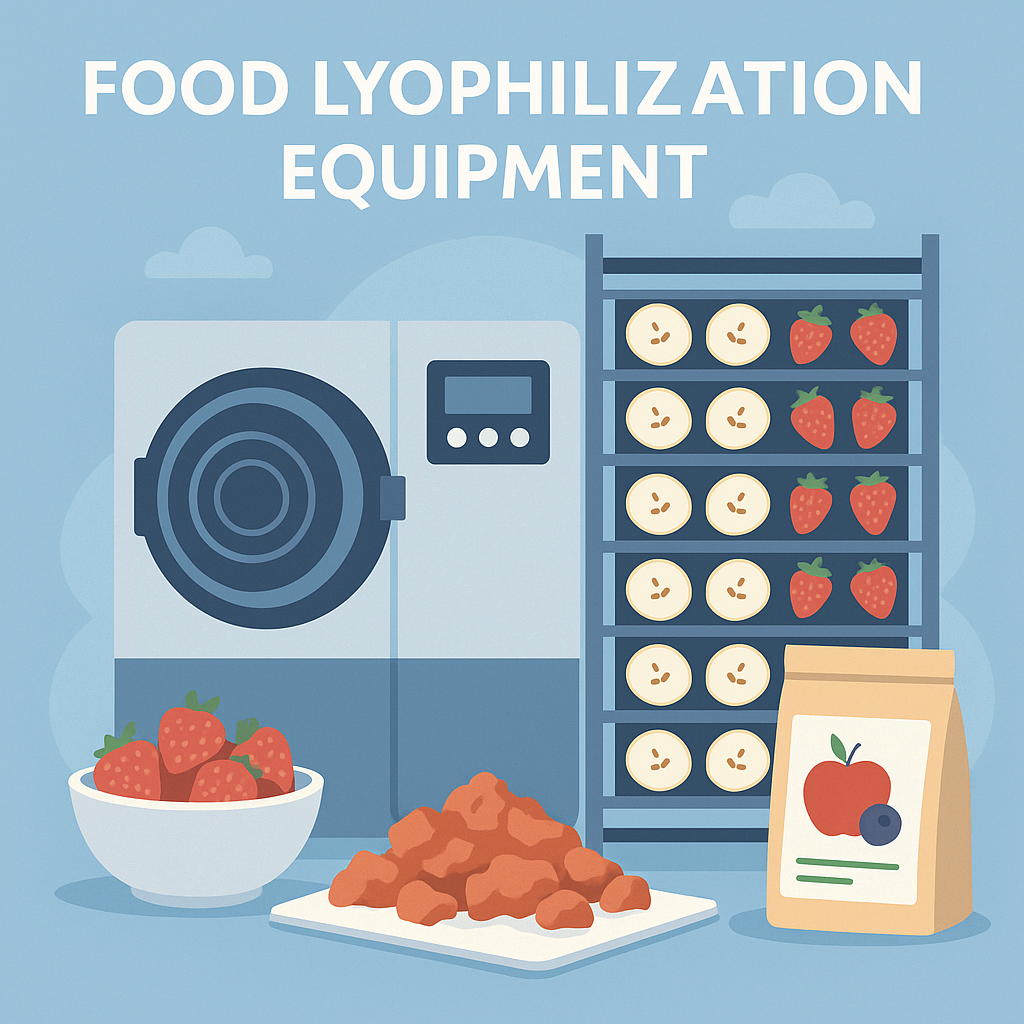The Global Food Lyophilization Equipment Market is projected to grow from USD 1.19 billion in 2025 to USD 1.60 billion by 2030, recording a CAGR of 6.0% during the forecast period. This growth is largely attributed to increasing consumer demand for healthy, shelf-stable, and preservative-free food products. As consumers prioritize clean-label options with natural taste and nutrition, food manufacturers are adopting freeze-drying (lyophilization) technologies to meet this demand.

What Is Driving the Market Forward?
Rising Global Trade of Perishable Commodities
The surge in international trade of perishable goods has created a pressing need for efficient preservation techniques. According to the Food and Agriculture Organization (FAO), global agricultural exports in 2023 were 1.7 times higher than in 2010. With Asia now the largest net food importer, there’s a heightened emphasis on extending the shelf life of high-value products like seafood, fruits, and ready meals. Lyophilization offers a reliable solution, maintaining nutritional quality and taste while complying with global export standards.
Stay ahead of the curve—invest in scalable lyophilization technologies to future-proof your food processing operations.
Expansion of E-commerce and Direct-to-Consumer Channels
The explosion of e-commerce and direct-to-consumer (DTC) food delivery services, especially post-COVID-19, is opening new avenues for freeze-drying solutions. Online grocery shopping, subscription meal kits, and niche health-food brands are rapidly gaining popularity. To ensure product quality over extended supply chains, manufacturers are turning to freeze-drying to provide shelf-stable, lightweight, and high-nutrient food options that meet modern convenience expectations.
Tray-Style Freeze Dryers to Lead the Segment
Among equipment types, tray-style freeze dryers hold the largest food lyophilization equipment market share. Their design allows for even and efficient drying, making them ideal for a wide range of foods including fruits, vegetables, dairy products, and ready-to-eat meals. Tray-style dryers are favored for their scalability, ease of operation, and ability to retain food quality in terms of flavor, texture, and nutrients—key attributes for consumer satisfaction and brand competitiveness.
Why Is Laboratory-Scale Equipment Gaining Traction?
Laboratory-scale lyophilization equipment plays a vital role in R&D, product innovation, and small-batch testing. Food companies, universities, and research centers use these compact systems to test formulations, improve texture, and optimize shelf life before full-scale commercialization. These machines are cost-effective, space-saving, and enable rapid prototyping—essential for brands looking to respond quickly to shifting market preferences.
Asia Pacific to Witness Fastest Growth Between 2025 and 2030
The Asia Pacific region is expected to exhibit the fastest growth in the food lyophilization equipment market. Countries like India, China, and Japan are investing heavily in food processing infrastructure, supported by strong government initiatives. For example, India’s Production Linked Incentive (PLI) Scheme and Pradhan Mantri Kisan Sampada Yojana (PMKSY) are facilitating the development of advanced food preservation technologies.
Rising urbanization, increasing disposable incomes, and changing dietary preferences are fueling the demand for long-shelf-life and additive-free food products. Manufacturers in the region are increasingly adopting freeze-drying systems to tap into domestic demand and capitalize on export opportunities. The shift toward health-conscious consumption is further accelerating the adoption of nutrient-preserving technologies like lyophilization.
Leading food lyophilization equipment companies driving innovation and market share in the global sector include:
- GEA Group Aktiengesellschaft (Germany)
- Hosokawa Micron Powder Systems (US)
- Tofflon Science and Technology Group Co., Ltd (China)
- Spincotech (India)
- Martin Christ Gefriertrocknungsanlagen GmbH (Germany)
These companies are focused on expanding production capabilities, enhancing equipment efficiency, and offering customized solutions to meet the diverse needs of food manufacturers.
Why Is Lyophilization the Future of Food Preservation?
As global trade expands, consumer expectations rise, and health-conscious choices dominate food trends, lyophilization stands out as a vital preservation method. With its ability to maintain product integrity, extend shelf life, and support e-commerce logistics, freeze-drying technology is becoming indispensable to the food industry. Investment in advanced lyophilization equipment will be key to staying competitive in a rapidly evolving market landscape.
